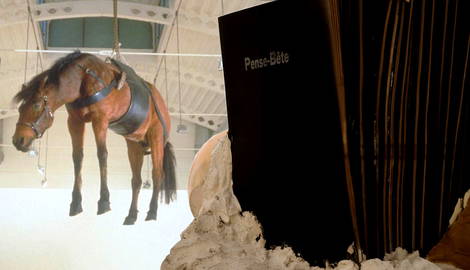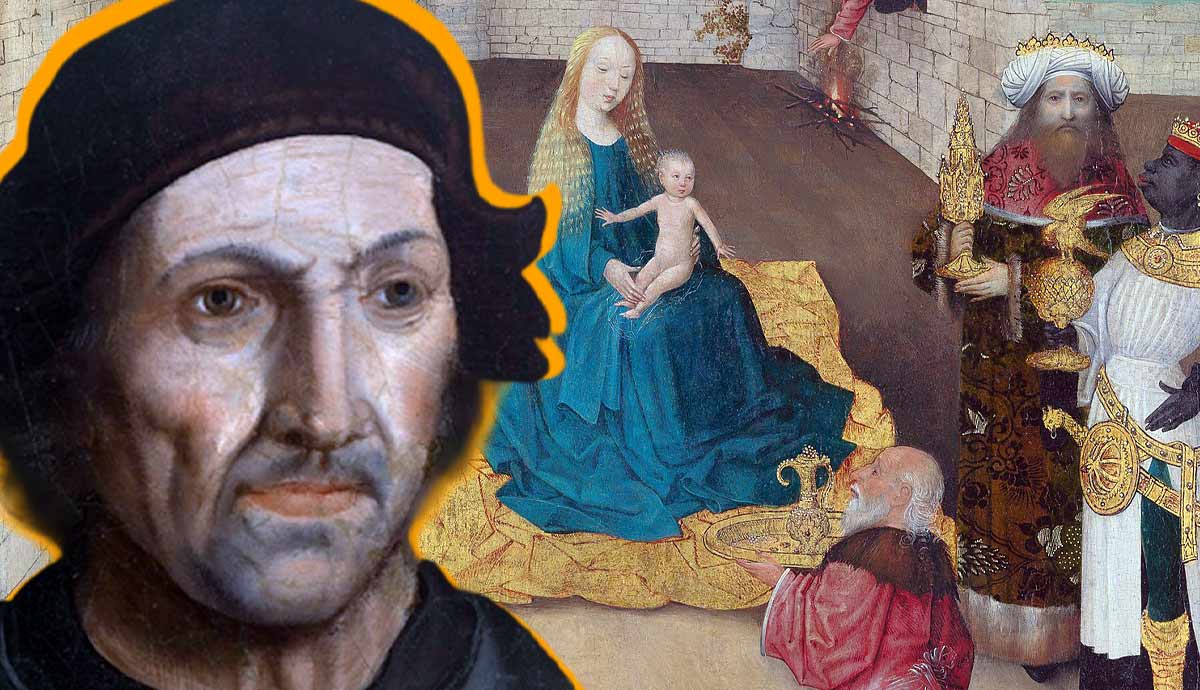
Conceptual art is a widely used term that refers not to a coherent art movement but rather to an approach to creating artworks. For a conceptual artist, the material qualities of a work, its decorative value, and the amount of skill and labor required mean much less than the original artistic intent. In other words, a Conceptualist puts their ideas first and the physical characteristics of the work second. Conceptual art challenges our notion of the material uniqueness of art, shifting our focus to the work of the human mind.
1. Marcel Broodthaers: The Forgotten Conceptual Artist

Although the name Marcel Broodtahers did not become as popular as those of his numerous colleagues, the Belgian artist was a pioneer of the highly intellectualized and complex form of conceptual art. Until the age of forty, he was a struggling poet associated with the Belgian Surrealists. He lived in poverty until his eventual artistic breakthrough. According to Broodthaers’ statement, he moved towards visual arts inspired by the idea of “creating something insincere.”
One of the recurrent topics of Broodthaers’ art was the critique of the art world’s elitism and the inaccessibility of art institutions. Although his artistic career unfolded rather late in his life, he had been previously exposed to the art world and its laws through numerous bohemian friends. In his works, Broodthaers imitated curatorial work by classifying random objects and he toyed with the ambiguity of the concept of art.
One of his first and most famous works, Memory Aid, consisted of unsold copies of his poetry book encased in plaster. Broodthaers juxtaposed art itself with its physical encapsulation—refined and intellectual poetry was trapped in an ugly puddle of plaster. This act of preservation did nothing to save the actual meaning of art, with words trapped inside the structure, inaccessible to the eyes.
2. John Baldessari

John Baldessari was one of the most important figures in contemporary conceptual art, both as an artist and a mentor. For years, he taught art in several American universities, encouraging his students to depart from traditional forms of art like painting and sculpture. In his own work, Baldessari reinvented and reappropriated techniques and materials, attacking the unstable borders in which the world of art institutions functioned. He painted text manuals for aspiring artists on canvases, manipulated celebrity photographs, and posed for seemingly nonsensical video art.
Over the years, Baldessari questioned the whole notion of art and the process of its creation. His most famous and influential work was an act of destruction, not creation. In 1970, he burned hundreds of his old paintings, gathered the ashes, and made cookies out of them, calling his work The Cremation Project. The act, seemingly contrary to the traditional notion, blurred the borders between the destructive and the constructive since the remains of ruined objects served as the basis for something new. Some art critics interpreted the work as a ritualistic act of cleansing, with Baldessari recycling his past artistic identity to give life to a new one.
3. Damien Hirst

Damien Hirst hardly needs an introduction. He is undoubtedly one of the most famous contemporary artists, both a celebrity and a provocateur. His main preoccupation is the concept of death and its meaning for humanity. He believes that mortality is the only thing that makes existence precious and valuable, deliberately creating shocking and repulsive pieces to demonstrate it.
Over the years, he incorporated rotting animal corpses, severed human body parts, and taxidermy. Even his visually unprovocative works hide darker undertones. Hirst’s series titled The Pharmaceutical Paintings appeared to be clusters of grids made out of colored dots. However, these were molecular structures of potentially lethal prescription drugs. In 1992, the artist constructed a full-sized replica of a pharmacy, exploring the feelings and thoughts inspired by the environment.
However, the reputation of Hirst is not as perfect as his sales suggest. Over the years, critics called him out for his unethical practices concerning dead bodies, sensationalism, and promotion of consumerism. He also received a share of criticism for his involvement with the NFTs. He launched his project The Currency in 2021, offering enthusiasts to buy 10,000 digital copies of his hand-painted work. After a confirmed purchase, Hirst destroyed the physical equivalent of the sold work, thus limiting its existence to a digital environment only. This practice received substantial criticism for the devastating environmental impact of the NFT industry as well as the dematerialization of art and its destruction for profit.
4. Maurizio Cattelan

Maurizio Cattelan is one of the most famous contemporary artists who managed to build a career with no artistic education. He learned from practice, working as a furniture maker and attending contemporary art shows. Today, Cattelan’s work embraces the ambiguity of symbols and mocks popular culture while willingly being a part of it. Just like in the case of his infamous work Comedian featuring a banana taped to a wall, public outrage is often intended by the artist as a part of his concept.
Cattelan’s whole oeuvre is based on dark humor and provocation. He is not afraid to use controversial materials and figures, from taxidermied horses to Adolf Hitler. Behind the superficial absurdity of his works, Cattelan often hides deeper concerns and meanings. His installation The Ballad of Trotsky consists of a giant racehorse hanging from a ceiling. The horse is the visual representation of the failed Russian Revolution and one of its leaders, Leon Trotsky. Trotsky aimed to build a free and just utopia on the rubbles of monarchy, but failed, leaving his country stuck mid-air, inevitably collapsing under its weight.
5. Christian Boltanski

Christian Boltanski was born in Paris to a family of Russian-Jewish origin. His traumatic family memories are present throughout his entire oeuvre. During World War II, his parents had to arrange a sham divorce to save each other from prosecution. Boltanski’s father spent a year and a half hiding under the floorboards of their apartment, only sometimes coming out to visit his wife. One such visit resulted in a pregnancy with Christian, which his mother had to conceal to avoid revealing their plan to neighbors. After the war ended, the Boltanski family was left with a never-ending feeling of danger and anxiety, as well as a deep shame for surviving while so many others did not.
The family memories of the war and Holocaust made a heavy impact on Boltanski. During his long artistic career, he worked with topics of generational trauma, remembrance, grief, and healing. His earliest teenage experiments with art were violent and bloody scenes of massacres. Over the years, he moved from direct violence to that implied and taking place in the past. In his works, Boltanski used photographs of people who were killed during military conflicts, their names and identities, as well as the techniques used for makeshift memorials. Over time, these memorials blend in with the natural environment, with people behind them dissolving into the collective unconscious.
6. Joseph Beuys: The Controversial Conceptual Artist

Joseph Beuys was a legendary conceptual artist. An ex-Luftwaffe pilot, Beuys claimed that during World War II, his plane crashed somewhere near Crimea, where a Crimean Tatar shaman nurtured him back to health with felt, fat, and honey. Allegedly, the shaman shared some of his spiritual knowledge with Beuys, completely changing his outlook on life.
After the war, Beuys denounced the Nazi ideology and turned to art. He preached environmentalism, the return to nature, and the need for humanity to reinvent the world after the two world wars. One of his most famous artworks, How to Explain Pictures to a Dead Hare, was a performance during which Beuys, with his head covered in honey and gold leaf, carried a dead animal around an empty art gallery, explaining the meaning of painting to it. The performance was full of grief and sorrow, yet still, it showed hope for salvation and reincarnation.
However, despite his widespread fame, Beuys was a more complicated figure than he appeared. It was proven by art historians that his story about Crimean shamans made no sense in terms of both geography and logic. Moreover, recent studies have shown that Beuys maintained connections with the Nazi officials who fled to South America after the war and was not as opposed to their ideology as he seemed to be.










